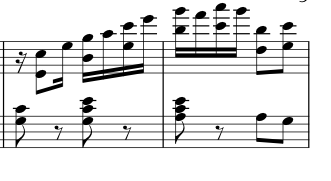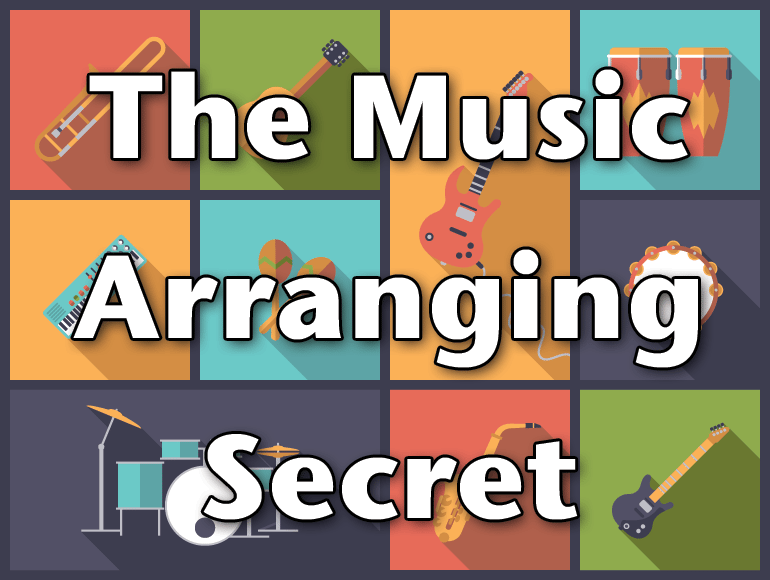Arranging is the art of taking a piece of music and making it your own – or taking a melody and adding different instruments under it such as a rhythm section or even a full horn section. The “arrangement” is then the final product of all the instruments coming together during that one piece of music.
By arranging music yourself, you can take a well-known melody or song and turn it into something completely different that represents your own musical influences and tastes better.
Let’s take Duke Ellington’s Caravan, for example. Many different people have recorded many different versions of this popular jazz standard – each of these versions have been “arranged” to sound a particular way, to use certain instruments and have a particular vibe. Ellington himself has recorded this particular song many times, with every version arranged completely differently:
Duke Ellington and his Orchestra:
Duke Ellington, Charles Mingus and Max Roach:
Both examples feature the same composition, but they have quite different arrangements.
So what’s the secret to a truly great musical arrangement? Well, first we need to take a look at the biggest pitfall that newbie arrangers fall into…
How to Arrange Music Yourself
Many people end up sitting at the piano to arrange music. Why? Simply because the piano offers a very visual approach, and also allows the arranger to play with harmony, melody and rhythm in a way that no other instrument easily does.
For example you can play the melody with one hand while trying to figure out chords or a bass line in the other. However, as useful as the piano can be for an arranger, it also has a few disadvantages that definitely need to be taken into consideration.
Arranging For Various Instruments
One of my arranging professors insisted that “everything sounds good on the piano”. I didn’t really get what he meant until I tried my hand at the assignment he instructed us to work on – which was to create horn parts for a particular song. Everything I came up with on the piano sounded rather lovely, the harmonies sounded nice and worked great with the melody… until I put everything into Sibelius and heard it played by an actual horn section! Some of the clusters that I loved on the piano sounded horrible between trumpets and trombones.
The piano is a great starting point, but it will ultimately be your ears that you rely on as you arrange more complex pieces.
Go Beyond Your Limitations
This leads me into the second main disadvantage of using the piano to arrange: you will be limited by your own musical abilities. Unless you are a phenomenal pianist, sitting at the piano to arrange will greatly impair your ability to write what you actually are hearing in your head, as you might have a hard time translating it to the piano, or to any other instrument.
Although I am actually a pianist myself, I’ve also had first-hand experience with this issue, in a way. As I was completing my graduate thesis, a part of my project was to arrange a few pieces that were written for piano solo, in order to perform them as duets with different instruments. One of the pieces I choose to work on was A La Antigua, by Ernesto Lecuona:
My work was to take this piece and turn it into a duet for piano and upright bass. So I had to come up with a bass part and re-arrange the piano so that it wasn’t doubling the bass line and sounded different from the original. Here is what I came up with:
I wrote this entire arrangement sitting at the computer, without the piano. What that gave me, was a piano part that actually ended up being rather challenging in certain areas!
For example, these two measures:

I had originally written the right hand melodic line completely all in 6ths – which turned out to be quite impossible to play without completely ruining the phrasing I was trying to achieve! So I decided to take out some of the 6th intervals and only leave every other 6th in place. It was still hard to perform and had to be thoroughly practiced, but the point is that if I had been sitting at the piano, I probably wouldn’t have come up with the 6th intervals at all, as they wouldn’t have been easily performed on the spot while I was arranging.
Stepping away from the piano (or from any other instrument you are using) can actually lead to more creativity, as you can use your ideas and your ears a lot more fully without being limited to the mechanics of the instrument and your ability level with it.
Once I realized how beneficial it had been to write this arrangement away from my instrument, I ended up using this technique for all the other arrangements that would be incorporated in my graduate project.
Arranging Without A Piano
So, if you can’t reliably sit at the piano to arrange music, what should you do? Sit at your computer, or at your desk with a piece of paper and a pencil. While using an instrument to arrange gives immediate reward, as you are able to play your own ideas and hear them instantly, this technique does have its drawbacks. If you are familiar with notation software such as Sibelius or Finale, I highly encourage you to use those, as you’ll be able to use the playback feature in the same way to hear your ideas right then and there.
Whether you use a computer or prefer to go old school with a pen and paper, the important thing when arranging is to use your ears to try to write down the sounds you are hearing in your mind.







